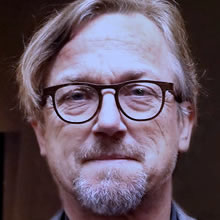Tengo el honor y el placer de presentarles uno de los más premiados humoristas gráficos a nivel internacional: Luc Descheemaeker, mejor conocido por su seudónimo 'O-SEKOER', nacido en Bélgica en 1955. Tuvo la amabilidad de aceptar compartir conmigo este vis a vis. Él aparece en mi “Breve diccionario del humor”, por lo que tuve que investigarlo y me convertí en su admirador. Como no habla español, ni yo neerlandés, ni francés ni alemán (lenguas que se hablan en su país), decidimos hacerlo en inglés, a través de DeepL.com/Translator.
PP: ¿Ha variado, ha evolucionado, su forma de hacer humor desde sus inicios hasta este momento?
LUC: Sí, por supuesto, lo ha hecho. A lo largo de los años el estilo y el enfoque artístico han cambiado. El desarrollo gráfico crece y el diseño personal evoluciona. Al mismo tiempo, la visión del mundo cambia. Los sujetos se vuelven diferentes... Al principio, había más "risas"... ahora hay más "pensamiento"...
PP: Claro, de la risa a la sonrisa, de la sonrisa a la sonrisa interior. Así se eleva la calidad al aumentar el ”pensamiento”. Pero jamás abandonar lo cómico, porque dejaría de ser humor, ¿no es cierto?. Es mi opinión y parece que coincidimos. Es lo que hacen los humoristas gráficos de calidad como usted. Y hablando de humor gráfico, ¿cómo lo ve el mundo en general? Es decir, ¿hay suficientes espacios para publicar? ¿Lo que se publica es casi siempre de buena calidad? ¿Ve mucha diferencia entre el humor creado para los concursos y el resto? ¿Hay suficiente público consumidor?
LUC: Hoy en día, llama la atención la creciente serie de dibujos hechos con tabletas de diseño gráfico. La "tinta sobre papel" completamente dibujada a mano rara vez se vuelve a ver. El color se ha convertido en algo esencial y en algunos países, la costumbre es colocar el texto en la caricatura a través del diálogo o la inscripción. Las caricaturas hechas para un concurso reproducen fácilmente las mismas interpretaciones del tema propuesto. Pero gracias a Internet y a los medios sociales, hay más oportunidades de mostrar su trabajo al mundo. Esto no significa que siempre se te pagará por ello...
PP: Ese es otro problema. Y cuando al fin pagan, no es lo suficiente. Una pregunta que surge a raíz de todo esto: ¿tenemos mucha censura en los medios y en el público de estos tiempos? ¿Mucha autocensura? Y para usar la pregunta de moda: ¿cuáles son los límites del humor?
LUC: Se sigue buscando temas "sensibles". En particular, la crítica severa de los sistemas políticos es rápidamente frustrada por los medios de comunicación social. Reacciones duras y lenguaje amenazante en Twitter, Instagram y Facebook podría hacerte pensar dos veces antes de publicar una caricatura. ¿Hasta dónde puede llegar un dibujante? Diferentes culturas tienen diferentes límites y las interpretaciones son subjetivas, por lo que siempre existe la posibilidad de que las ideas choquen.
PP: Es cierto, todos creen tener la verdad y algunos -aunque no la tengan-, impone la suya, o por lo menos tratan. No es fácil luchar contra eso. Ahora quiero saber, ¿políticamente hablando, el humor es de izquierda, de derecha, de ambos o de ninguno?
LUC: Estoy abierto a la justicia social, los temas de izquierda colorean mis caricaturas, los temas de derecha se convierten en el tema de mis caricaturas... Me gusta la solidaridad, el trabajo voluntario y la justicia.
PP: Sin dudas tiene buenas intenciones y es obvio que coincidimos en eso de solidaridad y justicia. Aunque yo prefiero –si tengo que hacer sátira, porque soy más de humor blanco-, hacer ese humor critico contra las malas autoridades, sean del color político que sean. Pero mejor sigamos en algo más “técnico”. ¿Cree que la caricatura personal, la viñeta editorial, la llamada caricatura o caricatura de humor en general, la tira cómica, el cómic, la fotografía de humor (y sus modalidades dentro de ella), etc., son formas que están contenidas dentro del "humor gráfico"? ¿O todas o algunas no caen dentro de ese concepto?
LUC: Los caricaturas son "imágenes de nuestro tiempo". Cada dibujo es un rastro de nuestro tiempo y una parte del gran mundo del humor gráfico. Dependiendo de la fuerza del contenido, la imagen puede seguir existiendo. Los chistes simples y pequeños no pueden llegar a una imagen fuerte que haga al espectador pensar, reír y filosofar.
PP: Sí, eso lo hablamos ya, creo que tenemos ciertos problemas de traducción quizás, porque mi pregunta era más conceptual de forma y contenido. Pero intentemos de nuevo en ese campo. Mire, sabemos que el trabajo ideal del humor gráfico es el que muestra una factura perfecta y un contenido que nos hace sonreír y pensar. Pero a menudo vemos una magnífica idea expresada con una factura pobre y viceversa, un trabajo impecable en términos de forma, pero con una idea débil. ¿Cuál de estas dos últimas variantes acepta mejor? ¿O ninguna o ellas? ¿Por qué?
LUC: Prefiero una imagen gráfica fuerte con un contenido fuerte. Prefiero el trabajo que queda por la fuerza del mensaje. Un dibujante puede ser una escultura en la mente del espectador... La imagen como metáfora de la idea.
PP: Estamos de acuerdo en que el ideal es la imagen gráfica fuerte con contenido fuerte, pero a mí sí me afecta mucho ver una forma débil o un contenido débil por igual, no puedo evitarlo. Pero, maestro, sobre eso, y sobre lo que quiera, ¿qué les aconsejarías a los que se inician en este mundo del humor gráfico? ¿Y también a los colegas que no admiran su trabajo?
LUC: Llevo 40 años trabajando con el humor. Este es un largo y agradable viaje a través del mundo del humor y el mundo de las técnicas gráficas. Este viaje nunca se detiene. Cada día llegan nuevos temas y un ser humano es desafiado por nuevas técnicas gráficas... Es ideal si te acompañan en este largo viaje a través del rico mundo del arte. Cada visita a un museo o a una galería de arte es una fuente de inspiración para una nueva imagen. Pero lo más importante es: trabajo, mucho trabajo en su mesa de dibujo y en mi caso al menos 4, 5 horas al día...
PP: Buen consejo, pero se corrió en eso decirle algo a los que no les gusta su trabajo (si es que hay alguno, claro). Y ahora para ir cerrando, ¿podría mencionar una pregunta que le hubiera gustado que le hiciera y que no le hice? ¿Podría responderla, por favor?
LUC: ¿Cómo describe su carrera como dibujante y qué significa para usted?
Soy un profesor de dibujo retirado. Llevo 40 años trabajando como profesor de arte en una escuela con estudiantes de 12 a 18 años. Era un trabajo de ensueño. Mostrándoles caricaturas regularmente, conocí mi propio trabajo y lo evalué mejor. Gracias a las numerosas reacciones a mis dibujos, mis imágenes también han evolucionado. A lo largo de los años, cientos, miles de mis dibujos han terminado en festivales internacionales. Algunos de ellos ganaron premios y me dieron la oportunidad de visitar varios festivales y exposiciones internacionales y conocer a varios dibujantes y colegas. Mis dibujos son mi visado para el mundo...
PP: Bueno, Luc, le agradezco infinitamente que me haya dedicado, atención, tiempo, esfuerzo y neuronas para este vis a vis. Sólo le deseo que continúe con sus éxitos y que se cuide mucho en estos tiempos.


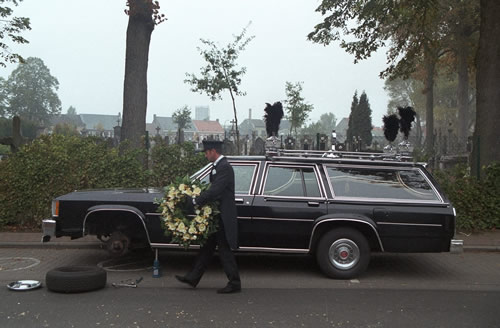
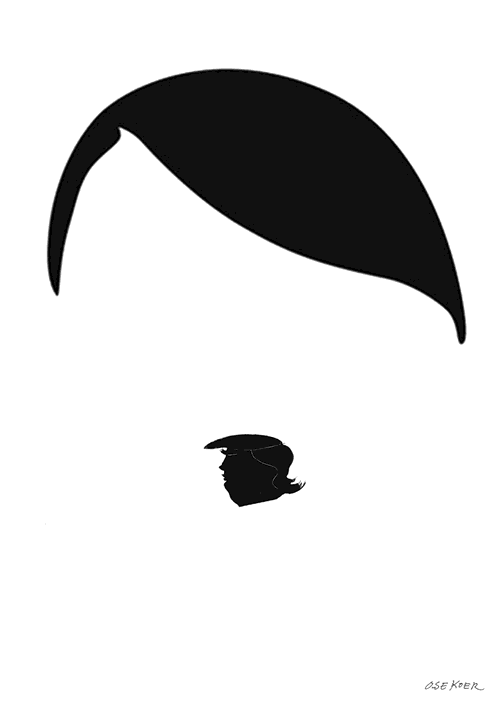
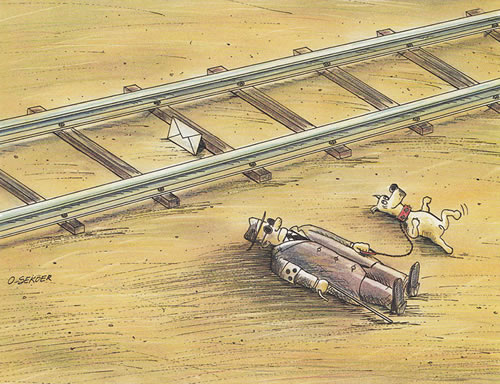
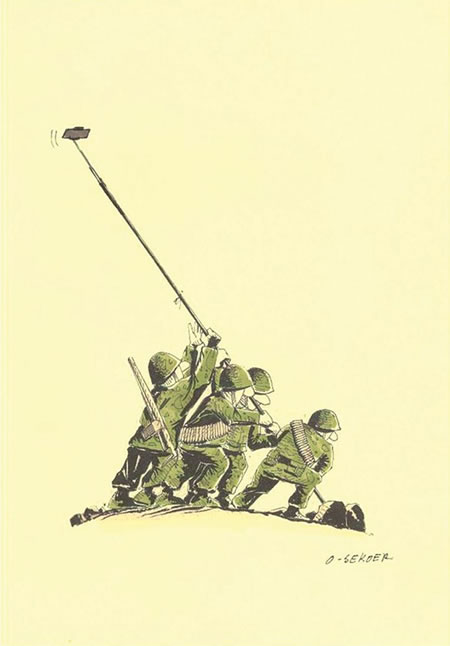
Interview with Luc Descheemaeker
By Pepe Pelayo
More thought than laughter
I have the honor and pleasure of introducing you to one of the most awarded international cartoonists: Luc Descheemaeker, better known by his pseudonym 'O-SEKOER', born in Belgium in 1955. He was kind enough to agree to share this "dialogue" with me. . He appears in my “Brief Dictionary of Humor”, so I had to research him and became his admirer. Since he doesn't speak Spanish, nor do I speak Dutch, French or German (languages spoken in his country), we decided to do it in English, through DeepL.com/Translator.
PP: Has it changed, has it evolved, your way of making humor since the beginning to this moment?
LUC: Yes, of course, it has. Over the years the style and artistic approach has changed. Your graphic development grows and your personal design evolves. At the same time, your view on the world changes. Subjects become different... In the beginning, there was more 'laughing'... now there is more 'thinking'...
PP: Of course, from laughter to smile, from smile to inner smile. This is how quality is raised by increasing “thinking”. But never abandon the comic, because it would stop being humor, right? It is my opinion and it seems that we agree. That's what quality cartoonists like you do. And speaking of graphic humor, how does the world in general see it? That is, are there enough spaces to publish? Is what is published almost always of good quality? Do you see much difference between the humor created for contests and the rest? Is there enough consumer public?
LUC: Striking in this day and age is the growing series of cartoons made with graphic design tablets. The completely hand-drawn 'ink on paper' is seldom seen again. Colour has become essential and in some countries, the custom is to place text in the cartoon through dialogue or inscription. Cartoons made for a competition easily reproduce the same interpretations of the proposed theme. But thanks to the internet and social media, there is more opportunity to show your work to the world. This doesn't mean that you will always be paid for it...
PP: That's another problem. And when they finally pay, it's not enough. A question that arises as a result of all this: do we have a lot of censorship in the media and the public these days? Much self-censorship? And to use the fashionable question: what are the limits of humor?
LUC: It keeps looking out for "sensitive" themes. In particular, harsh criticism of political systems is quickly thwarted by social media. Rough reactions and threatening language on twitter, Instagram and Facebook might make you think twice before publishing a cartoon. How far can a cartoonist go? Different cultures have different limits and interpretations are subjective, so there is always a chance that ideas clash.
PP: It's true, everyone believes they have the truth and some - even if they don't - impose their own, or at least try to. It's not easy to fight against that. Now I want to know, politically speaking, is humor left-wing, right-wing, both, or neither?
LUC: I'm open to social justice, left-wing themes color my cartoons, right-wing themes become the subject of my cartoons... I like solidarity, volunteer work and justice.
PP: Without a doubt he has good intentions and it is obvious that we agree on solidarity and justice. Although I prefer - if I have to do satire, because I am more into white humor -, to do that critical humor against bad authorities, regardless of their political color. But let's continue with something more “technical”. Do you think that the personal caricature, the editorial cartoon, the so-called caricature or humorous caricature in general, the comic strip, the comic, humorous photography (and its modalities within it), etc., are forms that are contained within of "graphic humor"? Or do all or some of them not fall within that concept?
LUC: Cartoons are 'images of our time'. Each drawing is a trace of our time and a part of the great world of graphic humor. Depending on the strength of the content, the image can continue to exist. Simple and small jokes cannot make it to a strong image that makes the viewer think, laugh and philosophize.
PP: Yes, we talked about that already, I think we have certain translation problems perhaps, because my question was more conceptual in form and content. But let's try again in that field. Look, we know that the ideal work of graphic humor is the one that shows perfect execution and content that makes us smile and think. But we often see a magnificent idea expressed with a poor workmanship and vice versa, an impeccable work in terms of form, but with a weak idea. Which of these last two variants do you accept better? Or none or them? Why?
LUC: I prefer a strong graphic image with strong content. I prefer the work that remains because of the strength of the message. A cartoonist can be a sculpture in the mind of the spectator... The image as a metaphor for the idea.
PP: We agree that the ideal is a strong graphic image with strong content, but it does affect me a lot to see a weak form or weak content equally, I can't help it. But, teacher, about that, and about whatever you want, what would you advise those who are starting out in this world of graphic humor? And also to colleagues who don't admire your work?
LUC: I've been working with cartoons and humor for 40 years. This is a long and pleasant journey through the world of humor and the world of graphic techniques. This journey never stops. Every day new subjects come to you and a human being is challenged by new graphic techniques... It is ideal if you are accompanied on this long journey through the rich world of art. Every visit to a museum or an art gallery is a source of inspiration for a new image. But the most important thing is: work, a lot of work at your drawing table and in my case at least 4,5 hours a day...
PP: Good advice, but it was a mistake to say something to those who don't like their work (if there are any, of course). And now, to close, could you mention a question that you would have liked me to ask you and that I didn't ask you? Could you answer it please?
LUC:¿Cómo describir su carrera como dibujante y qué significa para usted?
I'm a retired drawing teacher. I've been working as an art teacher for 40 years in a school with students aged 12 to 18. This was a dream job. By showing them cartoons to me on a regular basis, I got to know my own work and assess it better. Thanks to the many reactions to my cartoons, my images have also evolved. Over the years hundreds, of thousands of my cartoons have ended up at international festivals. Some of them won prizes and gave me the opportunity to visit several international festivals and exhibitions and get to know several cartoonists and colleagues. My drawings are my visa for the world...
PP: Well, Luc, I thank you infinitely for dedicating your attention, time, effort and neurons to this "dialogue." I only wish you to continue with your successes and to take good care of yourself during these times.

